Bich Ngo village belonged to Duc Hoa commune, Ha Dong district, Quang Nam province during Tu Duc's reign. Today, this village includes Bich Trung hamlet of Tam Xuan 1 commune and Bich Ngo, Bich Nam hamlet of Tam Xuan 2 commune, both of Nui Thanh district. Traces of this village still exist in the field and through folk tales.
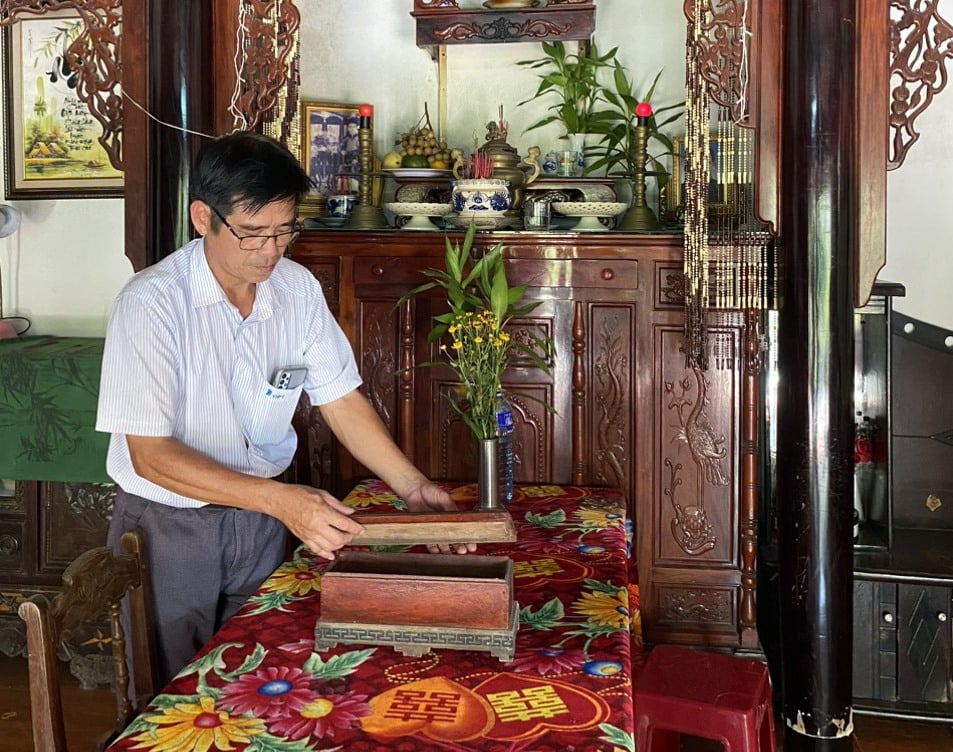
Bich Ngo village was recorded in the land register established during the Gia Long period with the name "Cay Vong village"; during the Minh Mang period, the name was changed to "Bich Ngo" (bich: green, ngo: green-leafed Vong tree). According to oral tradition in the village, in the beginning, the first residents came to establish the village, including 2 villages: Cay Vong village and Cay Bong village, both located in the newly established Duc Hoa commune.
Later, the population grew, private fields were increasingly exploited and expanded, both villages were upgraded to village size and split into two: Cay Bong village changed to Bong Mieu (belonging to Phuoc Loi commune) and Cay Vong village changed to Bich Ngo (belonging to Duc Hoa commune, later this commune changed its name to Duc Tan).
The location of Bich Ngo village in the early Nguyen Dynasty was recorded in the Gia Long land register as follows: "to the east, it borders Thach Kieu commune, Phu Lan Dong commune, Phu Hung commune, with the dike as the boundary/ to the west, it borders the river (Tam Ky)/ to the south, it borders Duong An commune (later changed to Truong An)/ to the north, it borders Khuong My commune (where there are three Cham towers of Khuong My)".
Folklore of Bich Ngo village
Retired teacher Le Van Phu in Phu Khe village, Tam Xuan 2 commune (passed away in 2019) spent a lot of time collecting many folk tales in the land between the two branches of Tam Ky and Bau Bau rivers and gathered them in the collection "Old stories of the old village" (internal circulation since December 2014), including two stories related to Bich Ngo village.
The story of “The Golden Pit Horse” (pages 15, 16) tells that to the west of Bich Ngo village there is a field by the forest called “Golden Pit Field”. Local legend says: Every summer night, a bright golden horse often appears in the middle of the field.
This horse often licked the rocks scattered across the fields, its saliva soaked into the rock surface, revealing golden lines. The locals followed those lines and found some real gold. This legend is associated with ancient rumors about gold veins in the mountains of Bong Mieu area spreading all the way to the stone hills of Bich Ngo village.
The story “Fire in Bich Ngo Village” (pages 12, 13) tells about a mysterious phenomenon: “During the year, during the sunny months, this area often has thunderstorms. While thunder and lightning rumble, somewhere in the village, people see fire flashing from the ground and then a house on fire. The Bich Ngo people call it “fire in the village” - because the fire does not come from the kitchen, nor from thunder and lightning, but from the ground.
At night, the fire is very clear, sometimes burning down an entire area. Therefore, since ancient times, villagers have held a ceremony to worship the fire god around February - the beginning of the dry season. To prevent fires, people here have the following custom: put out the stove when going to the fields; cook away from the main house; do not enter other people's houses to ask for fire.
"Donate to the people"
At the house of the descendant of Mr. Nguyen An Huu (in Bich An village, Tam Xuan 1 commune, Nui Thanh), there is still a Certificate of Quang Nam province (signed by two people, Bo Chanh Su of the Dang family and An Sat Su of the Le family, signed on April 1, 1865) confirming that Mr. Nguyen (An) Huu donated 800 quan of money to Quang Nam province to help the poor (donated money from Bat Bach Quan to the poor). This document also proposed that the court award him the rank of Tong Cuu Pham.
Along with that is the decree stamped with the "Treasure of the Mandate" with the main content (original text) as follows: "Decree: Candidate Nguyen Huu, Quang Nam province, Thang Binh prefecture, Ha Dong district, Duc Hoa central canton, Bich Ngo village, this is the place to donate money and rice, the family has a good heart. The Ministry of Finance requests that you grant him the title of ninth-grade scholar, to encourage him. I respectfully hear! Tu Duc 18th year, 10th month, 28th day"
(Translation: This decree is granted to the person with the title of “exam student” (candidate) named Nguyen Huu, whose hometown is Bich Ngo village, Duc Hoa commune, Ha Dong district, Thang Binh prefecture, Quang Nam province, who has contributed to raising money and rice this time, and is truly a good person. Now, in accordance with the request of the Ministry of Finance, he is granted the rank of Tong cuu pham Van giai to encourage and reward him. This decree was issued on the twenty-eighth day of the twelfth month of the eighteenth year of Tu Duc - 1865).
The family tree and tombstone still preserved in the locality indicate that Mr. Nguyen An Huu was the son of Mr. Nguyen An Te. Mr. Te passed two "nhieu hoc" exams, had a "medical" degree (a diploma certifying the qualifications to be a doctor for the state - NV) and (according to descendants) had worked as a physician in the royal palace (royal physician) in Hue .
Through the above story of "donating to the people", we can know that during Tu Duc's reign, Bich Ngo was a wealthy village with educated and successful people.
Nguyen Tat family's ancestor stele
Nguyen Tat is a large clan in Bich Ngo village. Currently, on the eastern side of Go Trau cemetery (in Bich Ngo village, Tam Xuan 1 commune, Nui Thanh), at the grave of the two ancestors of this clan, there is a cement stele with many details related to the ancient residents of Bich Ngo village.
The stele was erected on April 18, Binh Than year (1956). The front side is inscribed with the names of the two ancestors of the Nguyen Tat family and the descendants who erected the stele, "Nguyen Tat tu phai noi ngoai tu ton dong lap thach" (the descendants of the four Nguyen Tat families together erected the stele). The two side wings of the front side are inscribed with a parallel sentence in Nom script, "A mushroom in the sky records the story/ A thousand years in the family, the origin is clear". That "origin" is inscribed in the inscription on the back of the stele. Here is an excerpt (in Nom script with Quoc Ngu phonetics):
“Please engrave the work of the two of you on the stele to reflect on our great merits: In the past, the father and son of the first ancestor from Nghe An moved to Quang Nam dinh, established land, opened up the foundation, gathered people and established a hamlet, named the village Duc Hoa, divided into two hamlets: Hamlet 1 was called Cay Vong (ie Bich Ngo), Hamlet 2 was called Cay Bong (ie Bong Mieu).
Reclaiming the land of the locality (Ma Vang, Tra Go, Upper and Lower Bau Lang, Gia Linh); cultivating the fields of Da Ngang, building the Tien River dam, and collecting gold from the River God. We only heard about the achievements of the two of them, but as for why the history was lost, we who were born less than five or six hundred years ago do not know clearly…”.
At the end of the inscription, the author of the stele “would like to dedicate a poem saying…: Since I moved to Quang Nam dinh/ I was born and came to live here today/ I planned to let my children and grandchildren cultivate the fields/ I worshiped the gods and built a communal house/ I dug ditches and built dams to prevent drought/ I filtered sand and collected gold to pay taxes/ Why did history get lost/ I would like to express my eight sentences in unison”. The poem is very meaningful, it vividly depicts the situation of the early days of migration from the north to Ha Dong - Tam Ky.
On both sides of the stele (back) there is also a parallel sentence "The stele is clearly engraved on Bich land/ Incense smoke billows under Ngo sky".
Source



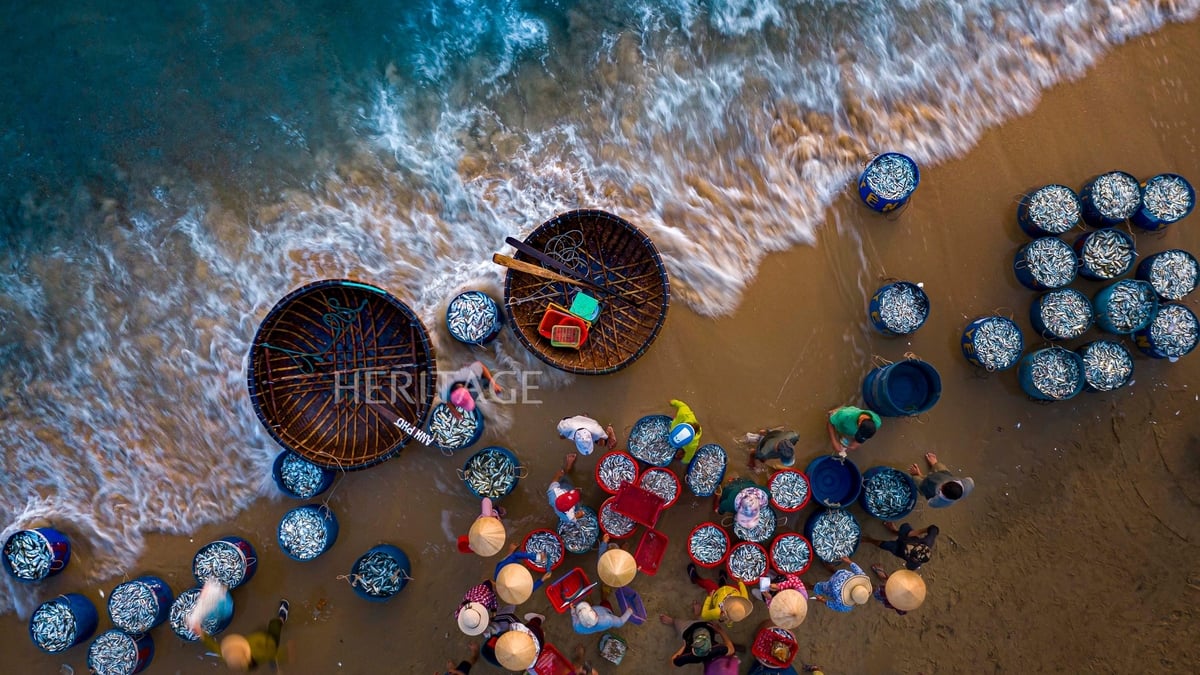


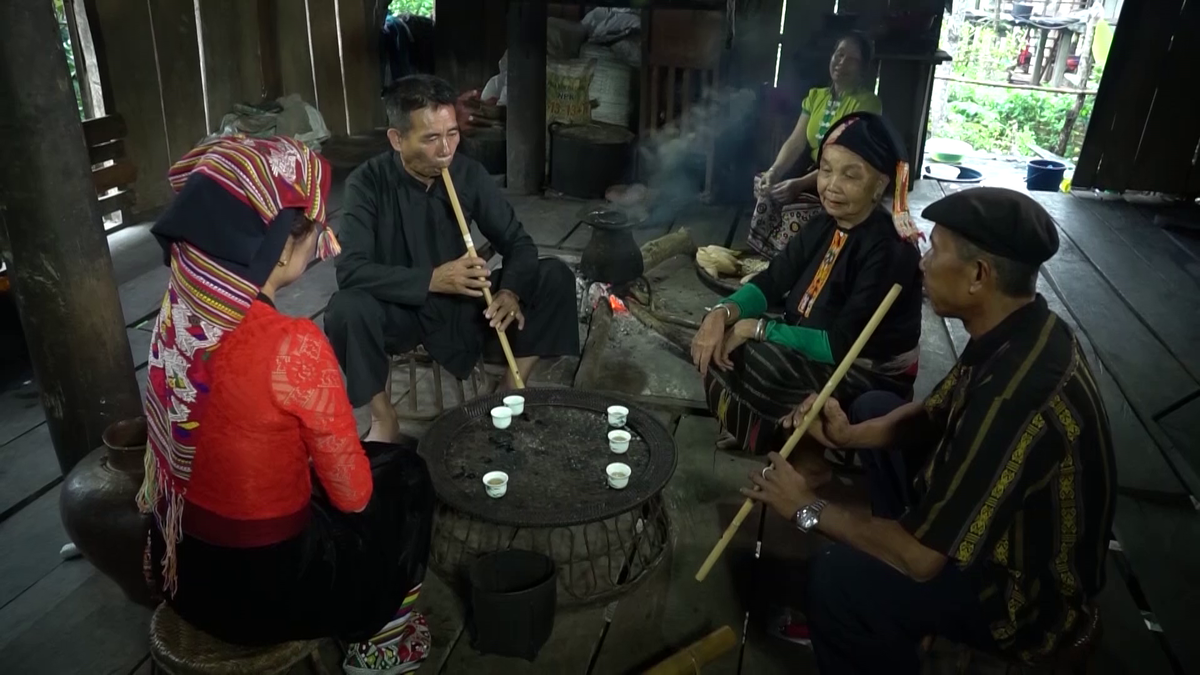


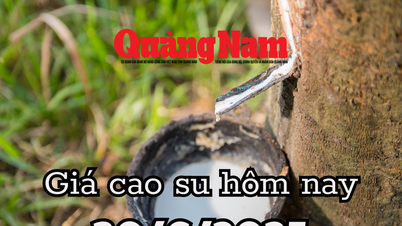
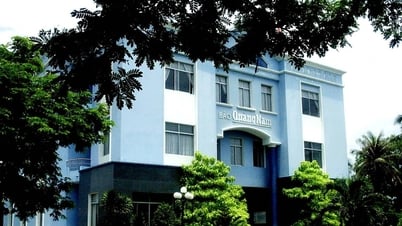









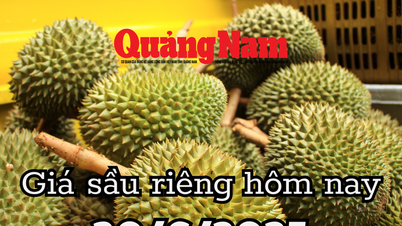

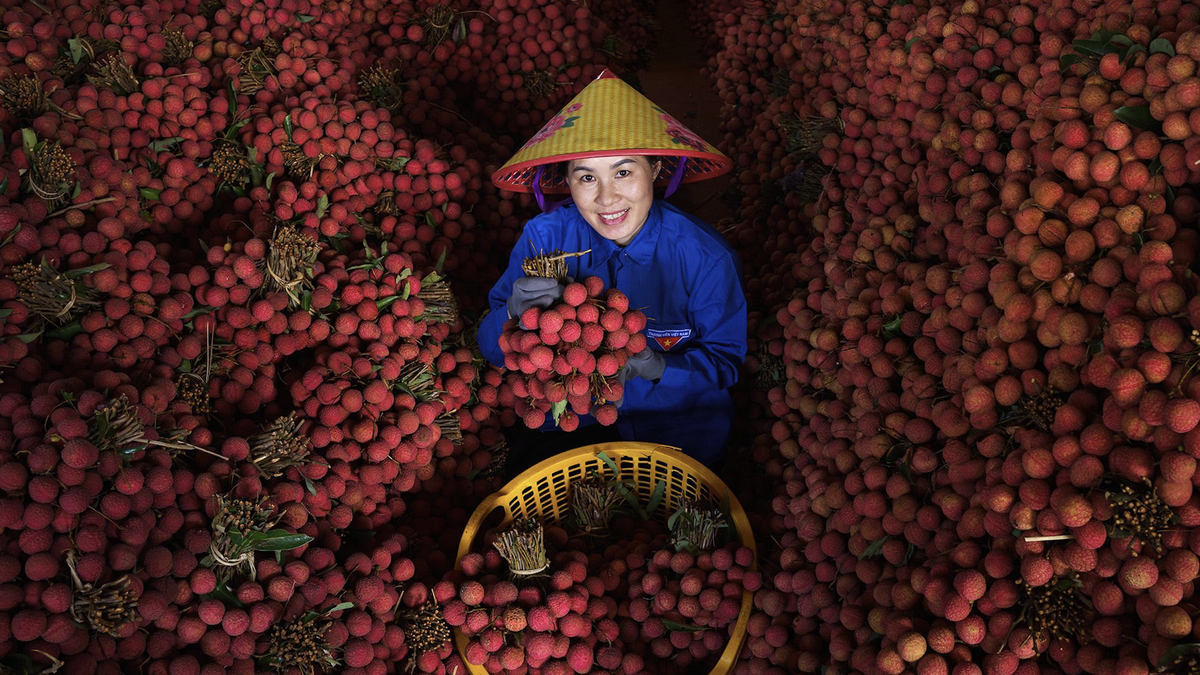
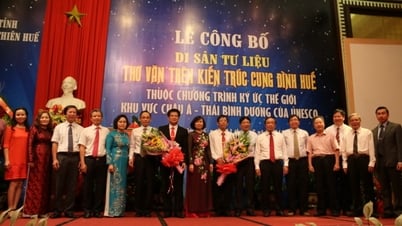

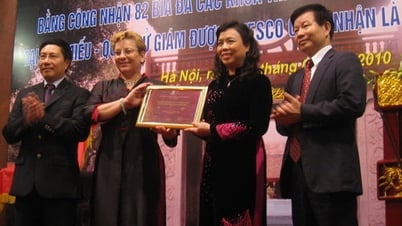

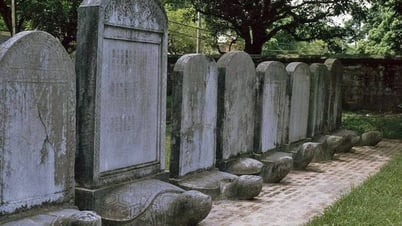

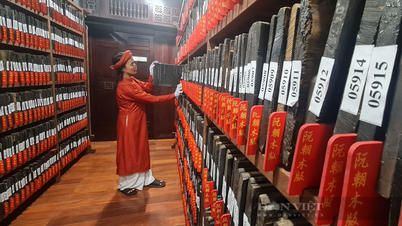

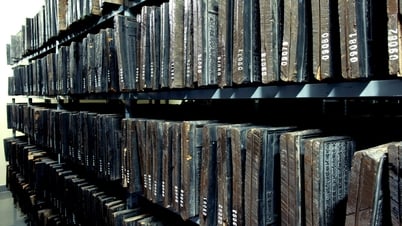



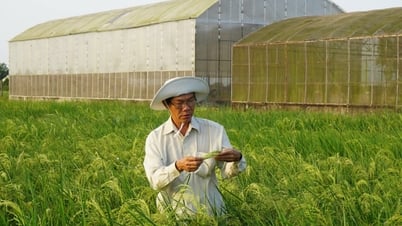

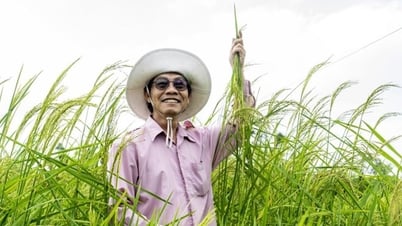

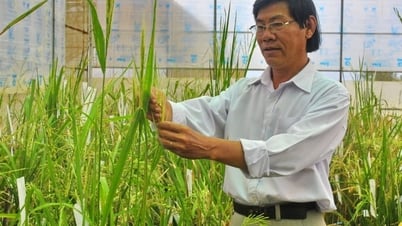



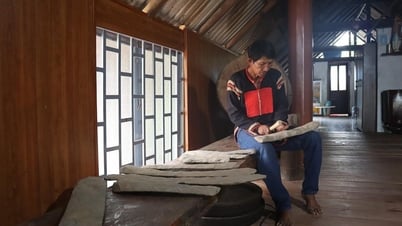




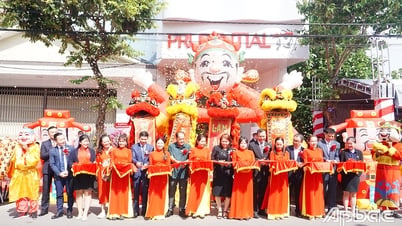








![[Photo] General Secretary To Lam attends the launch of 3 digital platforms serving the implementation of Resolution No. 57-NQ/TW](https://vphoto.vietnam.vn/thumb/402x226/vietnam/resource/IMAGE/2025/7/2/d7fb7a42b2c74ffbb1da1124c24d41d3)


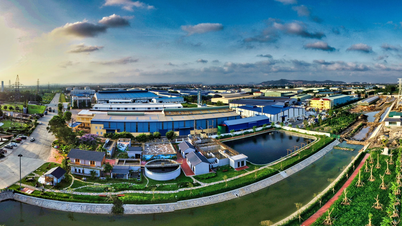










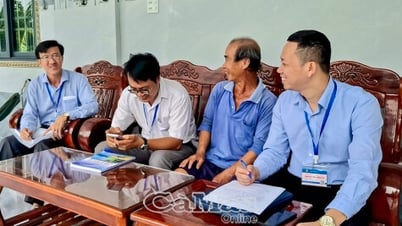

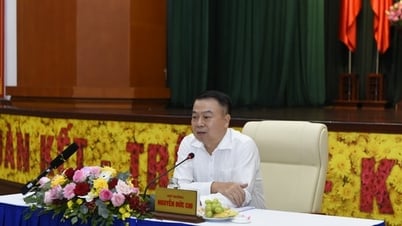



![[Infographic] Unique traditional festivals in Dong Nai](https://vphoto.vietnam.vn/thumb/402x226/vietnam/resource/IMAGE/2025/7/2/529dd451b2b6437dbb553afe859968cd)




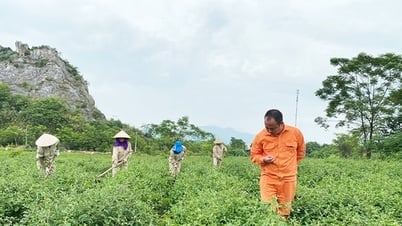








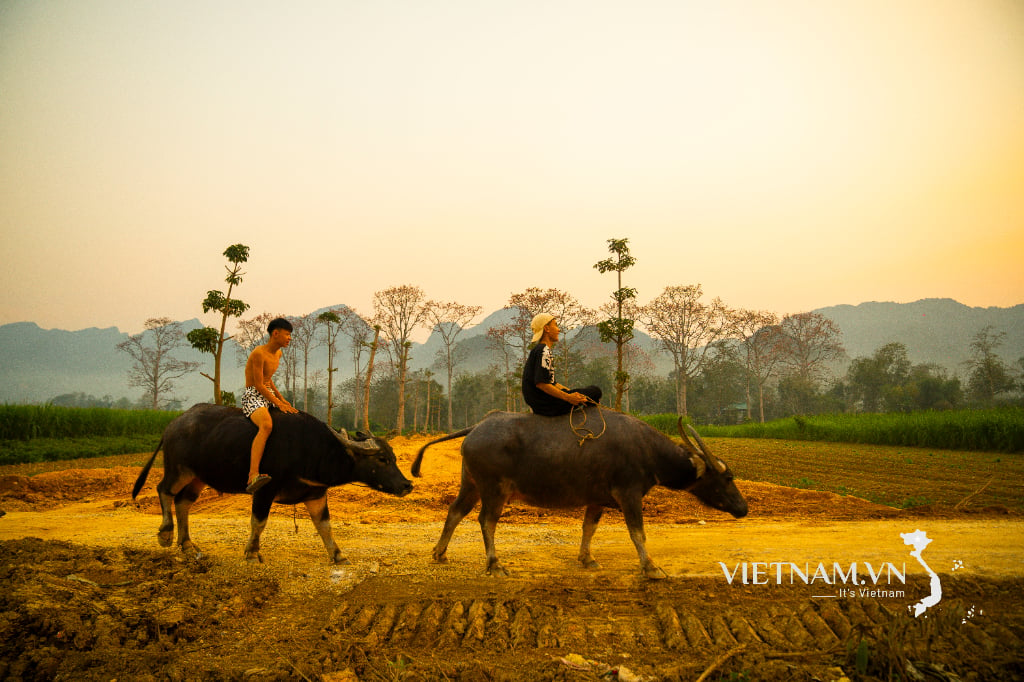


Comment (0)